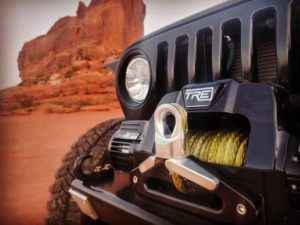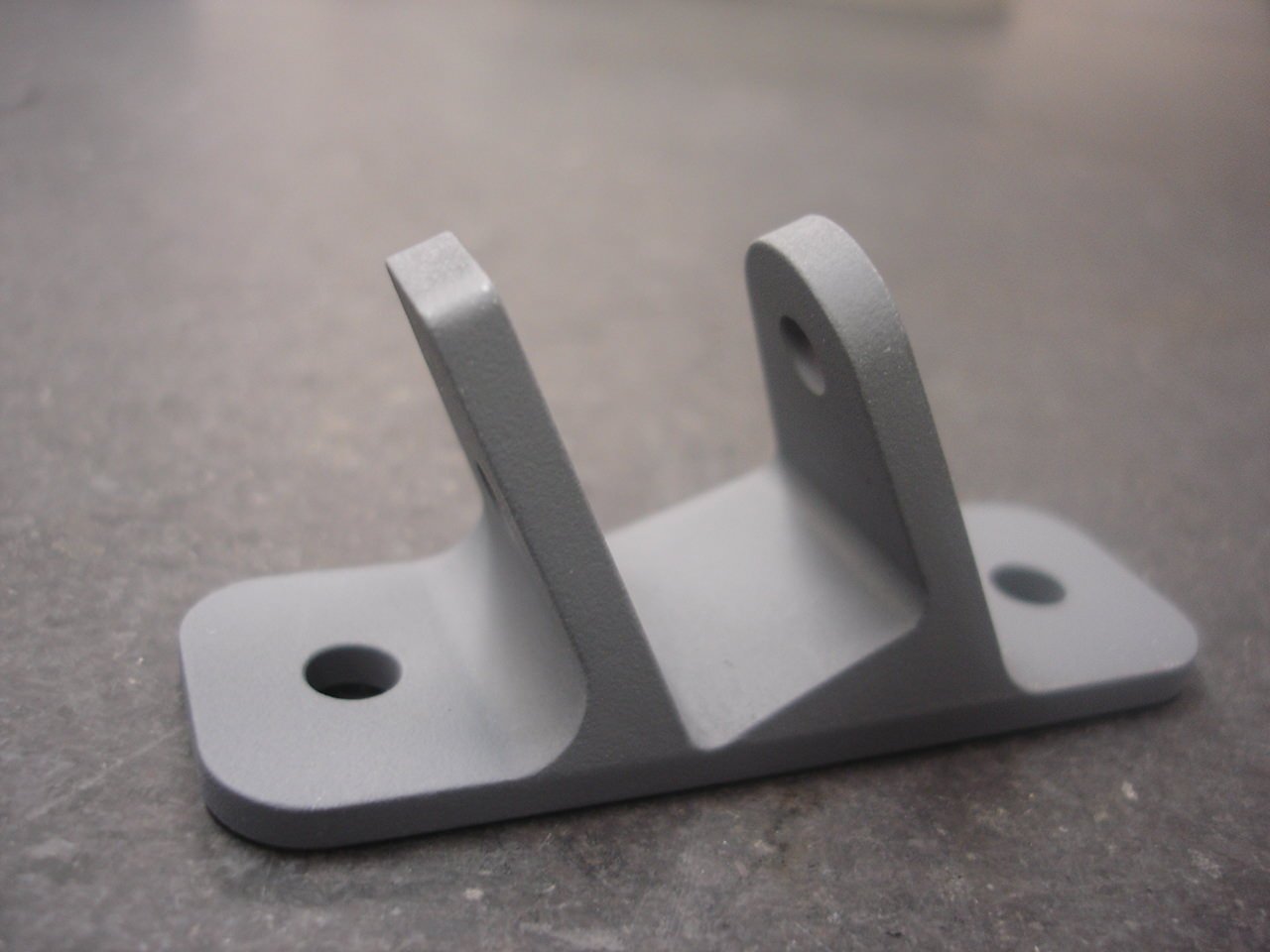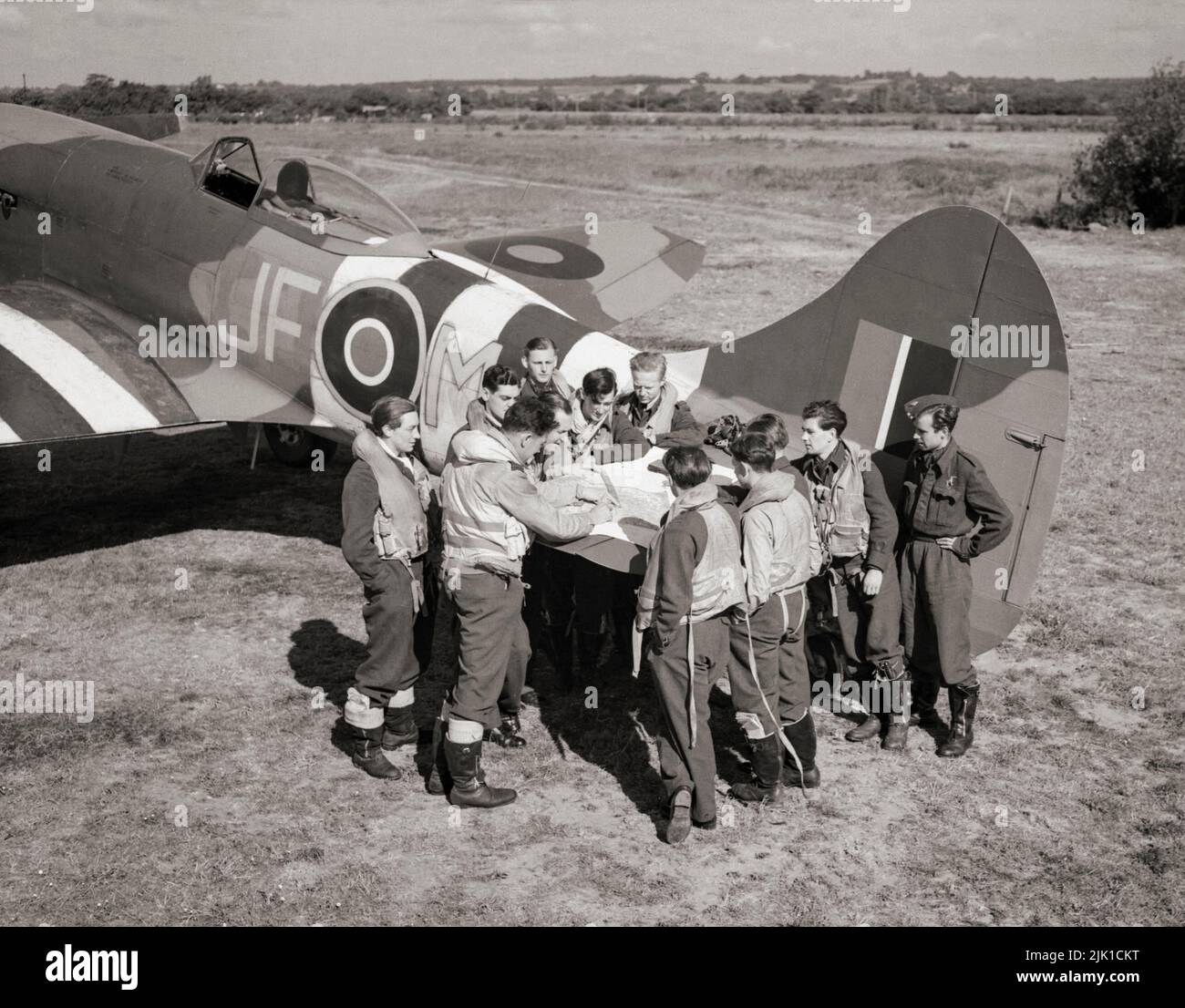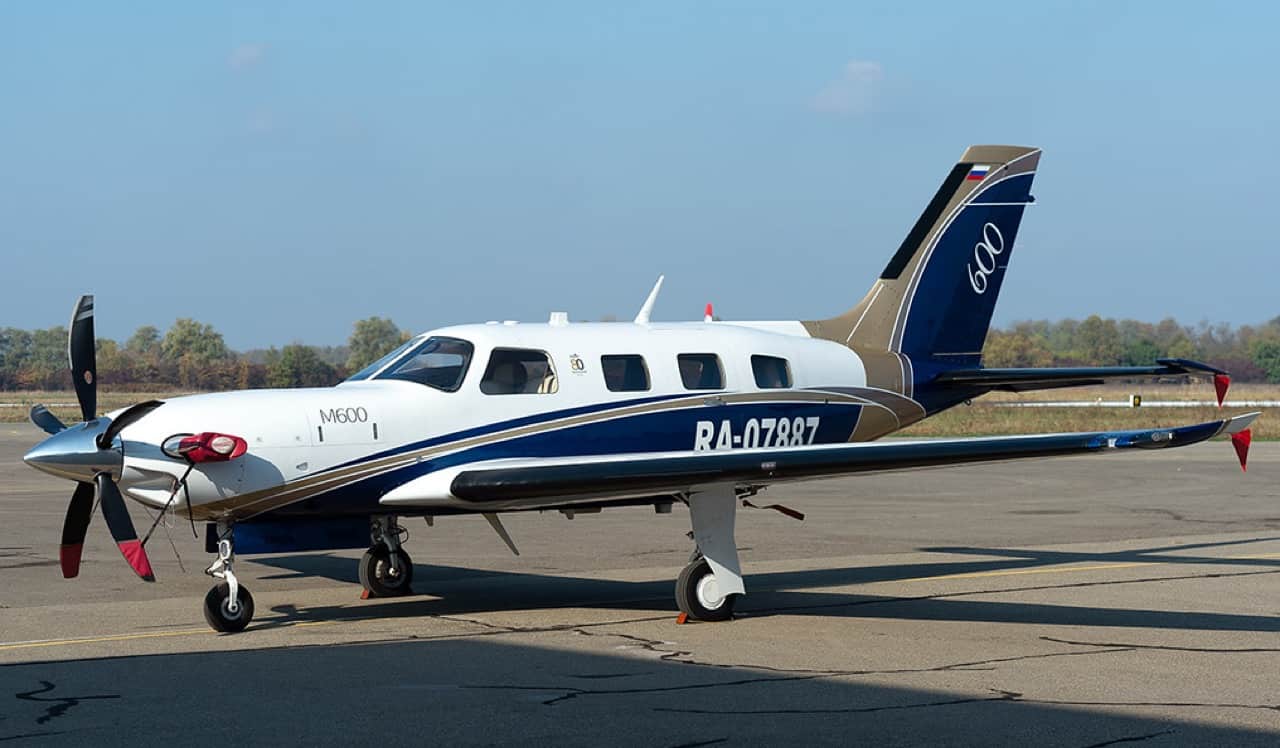F80 Aircraft - America's first operational jet fighter soon began setting records. In 1946 a Shooting Star made the first jet-powered coast-to-coast flight across the United States from Long Beach California to New York. The same year, an F-80 unit flew across the Atlantic.
A specially modified P-80R "racer" even set a (brief) world airspeed record of 623 miles per hour. The plane's armament consisted of six 12.7 mm Colt-Browning M3 machine guns with 300 rounds each in the forward fuselage.
F80 Aircraft

One 1,000 lb (454 kg) bomb or ten 5-inch (127 mm) unguided HVAR missiles could be suspended under each wing panel. Legendary aviation engineer Clarence "Kelly" Johnson, future designer of the SR-71 Blackbird spy plane, scratched out a clean design with elegant, almost art-deco lines and modern tricycle landing gear.
Usage In Battles
A flyable prototype was designed and assembled in a mere 143 days under conditions of absolute secrecy—only a handful of the 130 personnel assigned to the project even knew they were building a jet plane! The newly introduced aircraft soon began to set records.
In 1946, the aircraft became the first jet to cross the continental United States, from Long Beach to New York. In 1947, a specially modified F-80 set a new aviation speed record of 1,002 km/h (623 mph), which it held for a very short duration of time[3].
While the Shooting Star was too outdated to shine over Korea, it did spawn two successors. The more obscure was the F-94 Starfire, a two-seat radar-equipped night fighter that claimed six kills over Korea, including the first jet-on-jet engagement at night versus a MiG-15.
This F-80 must be flown strictly as Boom-and-Zoom, or Boom-and-Run. Anything else does not work due to the aircraft's inferior acceleration compared to props and some Axis jets at certain speeds. While its maneuvering energy retention (MER) is relatively poor - as with most early jets - its vertical and horizontal energy retention (ER) is decent.
Design And Development
Lockheed built a total of 917 F-80As and Bs. One aircraft was modified for an attempt on the world speed record and on June 19, 1947 and set a speed record of 624 mph (1,004 km/h).
Some of these modifications were retained in the F-80C and a total of 798 F-80Cs were produced between 1948 and 1949. At the same time, Lockheed designed a two-seat version, the F-94 Starfire. This model was equipped with radar for all-weather operations.

After completing their third pass, Maj. Evans Stephens and his wingman Lt. Russell Brown climbed to twenty thousand feet so they could cover their two wingmates. Suddenly, Brown spotted the silvery glint of around ten jet fighters streaking towards them from a higher altitude across the Chinese border.
He radioed the other element to abort their attack run—MiGs were coming! In the encounter with P-80s on November 8, only two of the Soviet fighters persisted on an intercept course. Stephens and Brown banked sharply to the left and maneuvered into a firing position on the approaching fighters.
Production And Service History
Although four of Brown's six M3 machine guns had jammed, he managed to fire several short bursts at his chosen target. The MiG rolled over and dove—and Brown followed, hurtling toward the ground at six hundred miles per hour.
Holding down the trigger, he raked the jet until he saw it burst into flames, then pulled back up at the last possible moment. Of the ten F-80 squadrons in Korea, all had transitioned to F-86 Saber fighters or F-84 ground attack planes by 1953—except one squadron that even reverted to old Mustang fighters.
As the Shooting Star was phased out of U.S. service, dozens were passed on to South American air forces such as that of Brazil, where they served into the sixties and seventies. As for the Nazi jets, although they were formidable adversaries, fuel shortages and deteriorating industrial base prevented them from having a large impact.
While the UK managed to deploy some of its own Meteor jets in response, they never encountered their German counterparts. However, Soviet records for November 8 tell a different story. MiG pilot Lt. Vladimir Kharitonov reported that he was ambushed by an American jet—but that he successfully escaped in a dive while ditching his external fuel tanks.
In fact, Russian histories claim the first jet-on-jet battle occurred on November 1, in which a MiG piloted by Lt. Semyon Khominich shot down the F-80 of Lt. Frank Van Sickle. However, the U.S. records list Van Sickle as falling to ground fire.
In any event, the day after Brown's engagement, the MiG-15 of Capt. Mikhail Grachev was shot down by a U.S. Navy F9F Panther jet—a kill upon which both sides' records agree. As with most early jets, the acceleration is sub-par, so Compressor and Engine should be focused on first, then a choice between Airframe, New Boosters or the Offensive 12 mm.
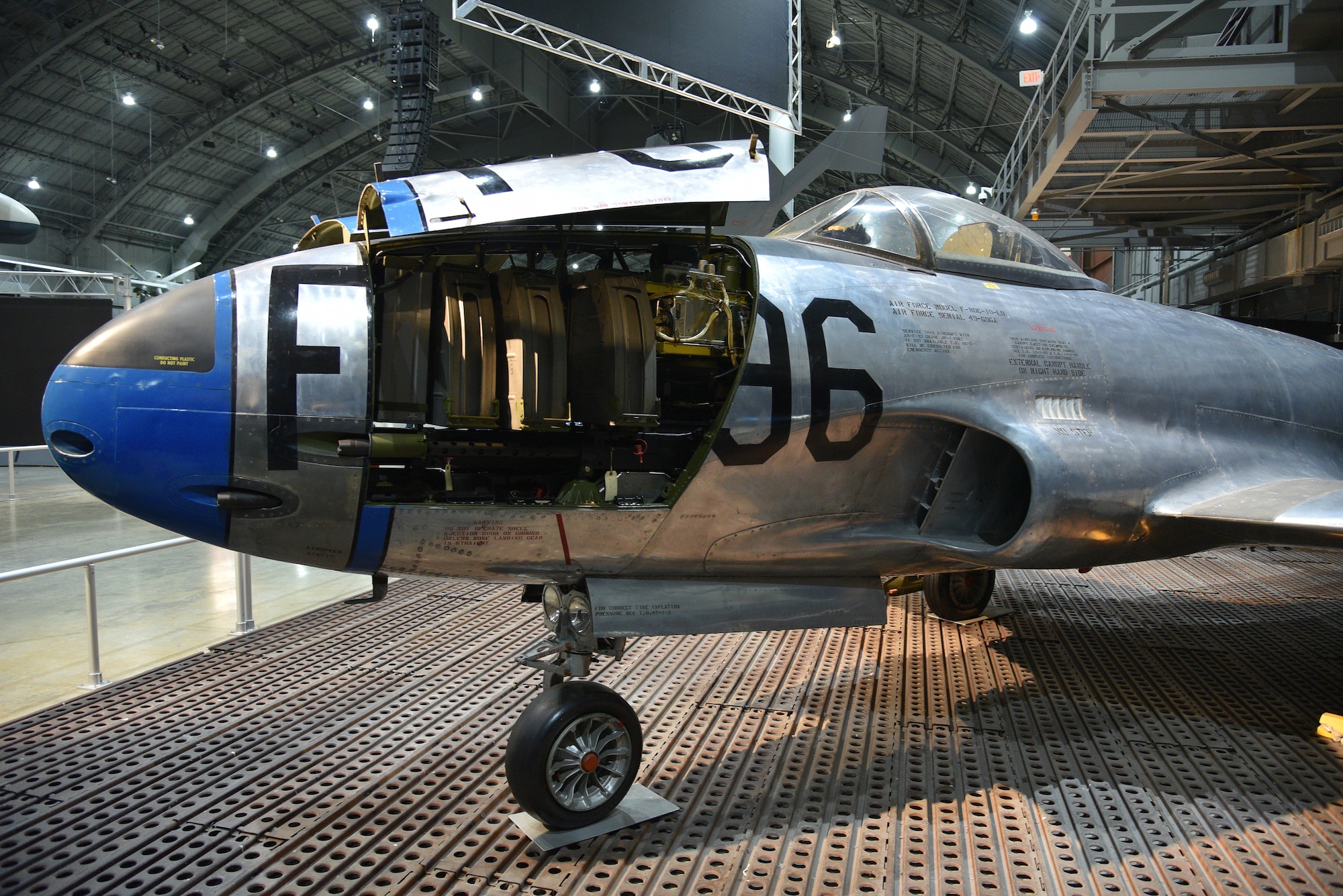
Wings Repair is recommended to help with the F-80's average maneuverability. Afterwards, the G-Suit upgrade will come in handy. Fuselage Repair and Cover are not really useful and can be ignored until the very end, although Airframe can be used to help the mediocre durability (the tail control will burn away instantly when you catch on fire unless you have Airframe).
The XP-80 was powered by a 2,460 lb (1,116 kg) thrust Halford H.1B turbojet engine and on the XP-80A the engine was changed to the 4,000 lb (1,814 kg) thrust General Electric I-40 turbojet. Production P-80s were powered with 3,850 lb (1,746 kg) thrust General Electric J-33-GE-11s or Allison J-33-A-9s.
The J-33 was the production version of the GE I-40.2 Over the course of the war, 113 Shooting Stars were lost to ground fire. For example, on November 22, 1952, Maj. Charles Loring's aircraft was struck by Chinese anti-aircraft guns while attacking an artillery position near Kunhwa that had pinned down UN troops.
Ignoring his wingman's radio messages to abort the mission, he deliberately plunged his stricken aircraft into a gun emplacement, a deed for which he was posthumously awarded the Medal of Honor. The United States' first jet plane, the Bell P-59 Airacomet, first flew on October 1942. Although sixty armed production models were eventually built, the Airacomets were never deployed operationally because their early, unreliable turbojets gave them a maximum speed of only around
410 miles per hour—slower than the P-51 Mustang piston-engine fighter then in service. But in 1943 Allied intelligence indicated that Nazi Me-262 jets capable of 540 miles per hour would soon join the fray. Lockheed was asked to produce its own jet fighter using a more powerful British turbojet—in just six months.
The Shooting Stars had arrived a few months earlier, in response to North Korea's overwhelming invasion of its southern neighbor using Soviet-supplied tanks, artillery and aircraft. After a rough early period, a UN counterattack had turned the tables: these F-80s from the Fifty-First Fighter Wing were flying out of U.S.-occupied Pyongyang, striking the remaining North Korean forces near the border with China.
A sleeker, more modern design than the F-80, the Soviet jet had swept wings and was powered by a reverse-engineered and uprated VK-1 turbojet based on Rolls-Royce Nene engines that the British government had incredibly agreed to sell to the
Soviet Union in 1946. Not only could the communist fighters easily outrun the Shooting Stars at 670 miles per hour, but they had heavier armament in the form of two twenty-three-millimeter cannons and a huge thirty-seven-millimeter gun.

For ground strike, the F-80 is a decent aircraft, carrying the USAF standard of bombs, rockets, and ground attack belts. However, it is not recommended to hit ground targets, this is a fighter and not a lumbering attacker, and should be used as an air-superiority fighter.
The other was the legendary T-33 two-seat trainer jet. More than 6,500 were built—and another 650 license-built in Canada—and these served the Air Forces of more than forty countries ranging as widely as Burma, France and Yugoslavia.
Cuban T-33s even fought CIA-sponsored anti-Castro forces during the Bay of Pigs invasion in 1961, shooting down three B-26 bombers and sinking several ships. Sébastien Roblin holds a Master's Degree in Conflict Resolution from Georgetown University and served as a university instructor for the Peace Corps in China.
He has also worked in education, editing, and refugee resettlement in France and the United States. He currently writes on security and military history for War Is Boring. Just four preproduction YP-80As made it to Europe in 1945 before World War II ended.
Two remained in England, where one suffered yet another fatal crash. The other two were deployed to Italy, where they flew a few missions before the end of the war but did not encounter enemy aircraft.
One thing to take note of is the M2 Brownings. Unfortunately, they are insufficient for high-speed combat due to the low rate of fire and subsequently limited damage output; be aware, however, that they still pack a punch in partial head-ons with 262s, 229s, and the like.
The issue is later fixed with the M3 Browning on the successor F-80C Shooting star, but the ammunition load still remains low, like on the P-51D. As for piston planes: they are capable of setting enemy piston planes on fire in a short burst.
All of the guns are mounted in the nose, making them deadly accurate when performing head-ons, especially once the "new 12 mm MGs" modification is installed. For ground attack, there is the usual complement of ordnance for the USAF: HVAR rockets and standard 1,000 lb bombs.

The first flight of the XP-80 prototype was performed in January 1944. The first production version, designated the P-80A Shooting Star, entered service in 1946. The P-80 became the first combat-capable jet aircraft to enter service with the
USAAF. Just four preproduction YP-80As made it to Europe in 1945 before World War II ended. Two remained in England, where one suffered yet another fatal crash. The other two were deployed to Italy, where they flew a few missions before the end of the war but did not encounter enemy aircraft.
Legendary aviation engineer Clarence "Kelly" Johnson, future designer of the SR-71 Blackbird spy plane, scratched out a clean design with elegant, almost art-deco lines and modern tricycle landing gear. A flyable prototype was designed and assembled in a mere 143 days under conditions of absolute secrecy—only a handful of the 130 personnel assigned to the project even knew they were building a jet plane!
The main purpose of the F-80 is to teach a pilot how to fly jets in general. If a pilot is doing well in the F-80, he's ready to move to higher-ranked jets. Never give up your speed: it is the plane's insurance.
Only trade it for the altitude in zoom climbs. While credit for the first jet-on-jet kill may remain disputed, the fact that the MiG-15 could outrun, outmaneuver and outgun the F-80 is not. U.S. records show that a total of seventeen Shooting Stars were lost in air-to-air combat, while claiming six MiG-15s in return, in addition to eleven propeller planes.
When a formation of huge B-29 bombers escorted by one hundred F-80s and F-84s was ambushed by thirty MiGs on April 12, 1951, three B-29s went down in flames without a single attacking fighter lost. Utilizing its amazing boom and zoom capabilities, the F-80A-5 can easily outspeed enemy targets from the dive initiated, paired with its amazing energy retention, one can do very well in bringing down enemy aircraft.
However, when at low speeds, the F-80 is in a dangerous position so one should pull off from an assault by zoom climbing back to a preferable altitude above the battle. One can dive back on the enemy when they are spread out, low and slow.
Always remember to keep your speed up, as enemies close by can easily catch you off guard when attacking. Tracer belts are an excellent choice. Although with the advent of jets, we see the introduction of all-metal airframes across nations, the fire-starting (and armor-piercing) ability of the M20 API-T round is still nothing to be trifled with.

Tracers are inherently easier to aim, as well, and the penetration capability of the M20 API-T is only slightly less than that of the M2 AP round. The stealth belt is another good choice, with a 50/50 combination of M8 AP-I and M23 Incendiary rounds.
Lockheed nevertheless built more than 1,700 Shooting Stars in the years after World War II, redesignated F-80. A new F-80B model followed, which introduced an ejection seat, followed by the definitive F-80C, which added more powerful J33-A-35 engines boosting speed up to six hundred miles per hour and distinctive 260-gallon wingtip fuel tanks.
extending range to 1,200 miles. Dozens were even transferred to the Navy and Marines, modified with arrestor hooks so aviators could practice jet-powered carrier landings. An RF-80 photo-recon model that had a camera in a translucent nose panel also saw widespread service.
The F-80 Shooting Star was an American straight-wing jet aircraft. It was the first American-designed jet fighter to enter service, and served for a short time in the Korean war before being replaced by the more capable F-86 Sabre.
The aircraft was designed in just 143 days[1], and as a result, suffered from many critical issues; the aircraft was responsible for the deaths of several test pilots, including Richard Bong, America's highest scoring WWII ace[2].
The aircraft, originally intended to fight the Me-262 over the skies of Europe, arrived too late to see service in the Second World War. However, the plane would go on to serve in the Korean War, where it was the first American jet to see combat.
America's first operational jet fighter soon began setting records. In 1946 a Shooting Star made the first jet-powered coast-to-coast flight across the United States from Long Beach California to New York. The same year, an F-80 unit flew across the Atlantic.
A specially modified P-80R "racer" even set a (brief) world airspeed record of 623 miles per hour. However, the Shooting Star retained the straight wings and tail of World War II piston-engine fighters—design elements that impaired performance when approaching the speed of sound.
Problems with the fuel pump on the XP-80 caused fatal accidents that killed Lockheed's chief test pilot and later Richard Bong, the top-scoring U.S. ace of World War II. As for the Nazi jets, although they were formidable adversaries, fuel shortages and deteriorating industrial base prevented them from having a large impact.
While the UK managed to deploy some of its own Meteor jets in response, they never encountered their German counterparts.
f 80 shooting star, lockheed f 80, f80 fighter jet, f 80 cockpit, lockheed p 80 shooting star, retired 747 airplanes for sale, f80 shooting star photos, first american jet
